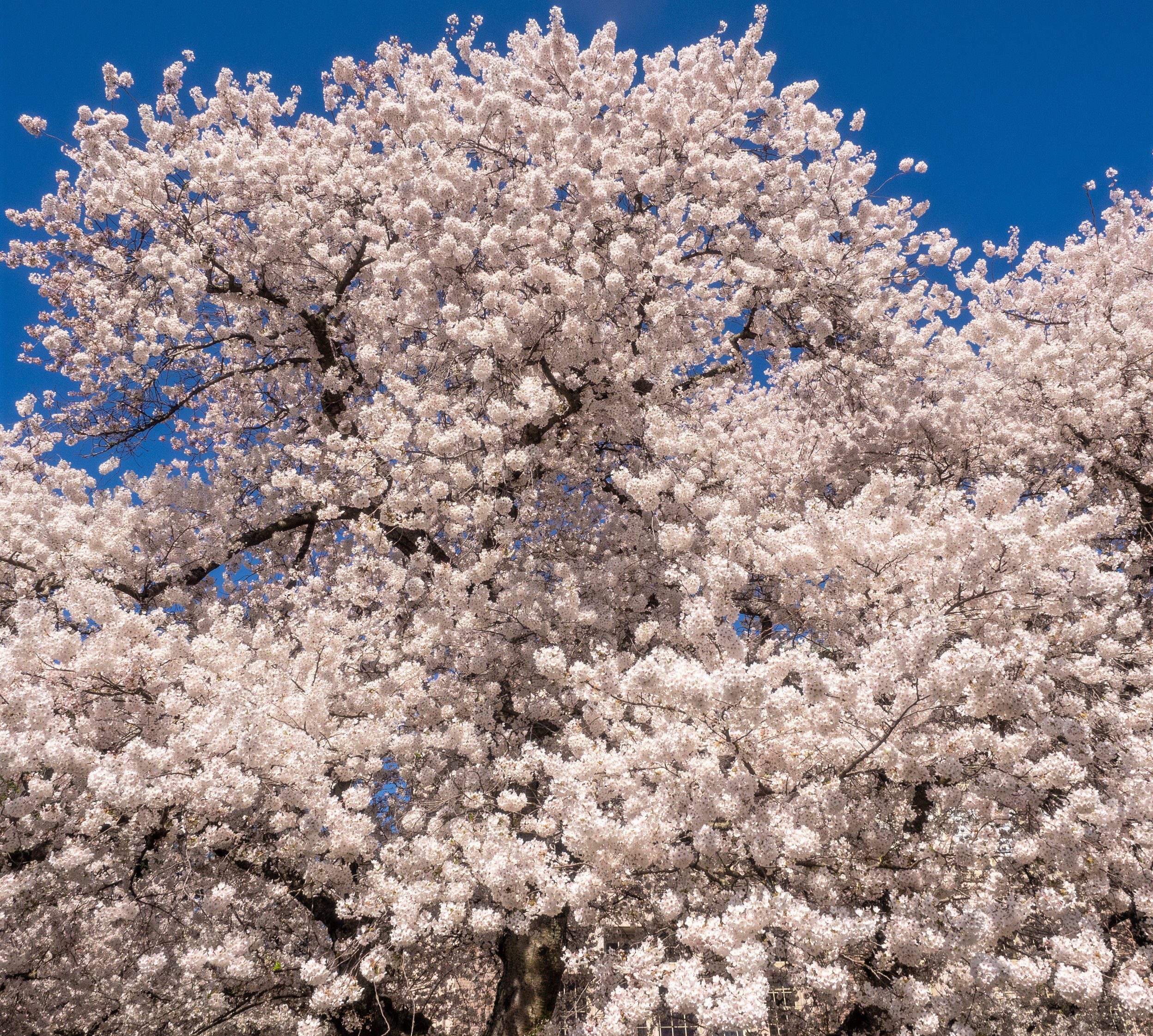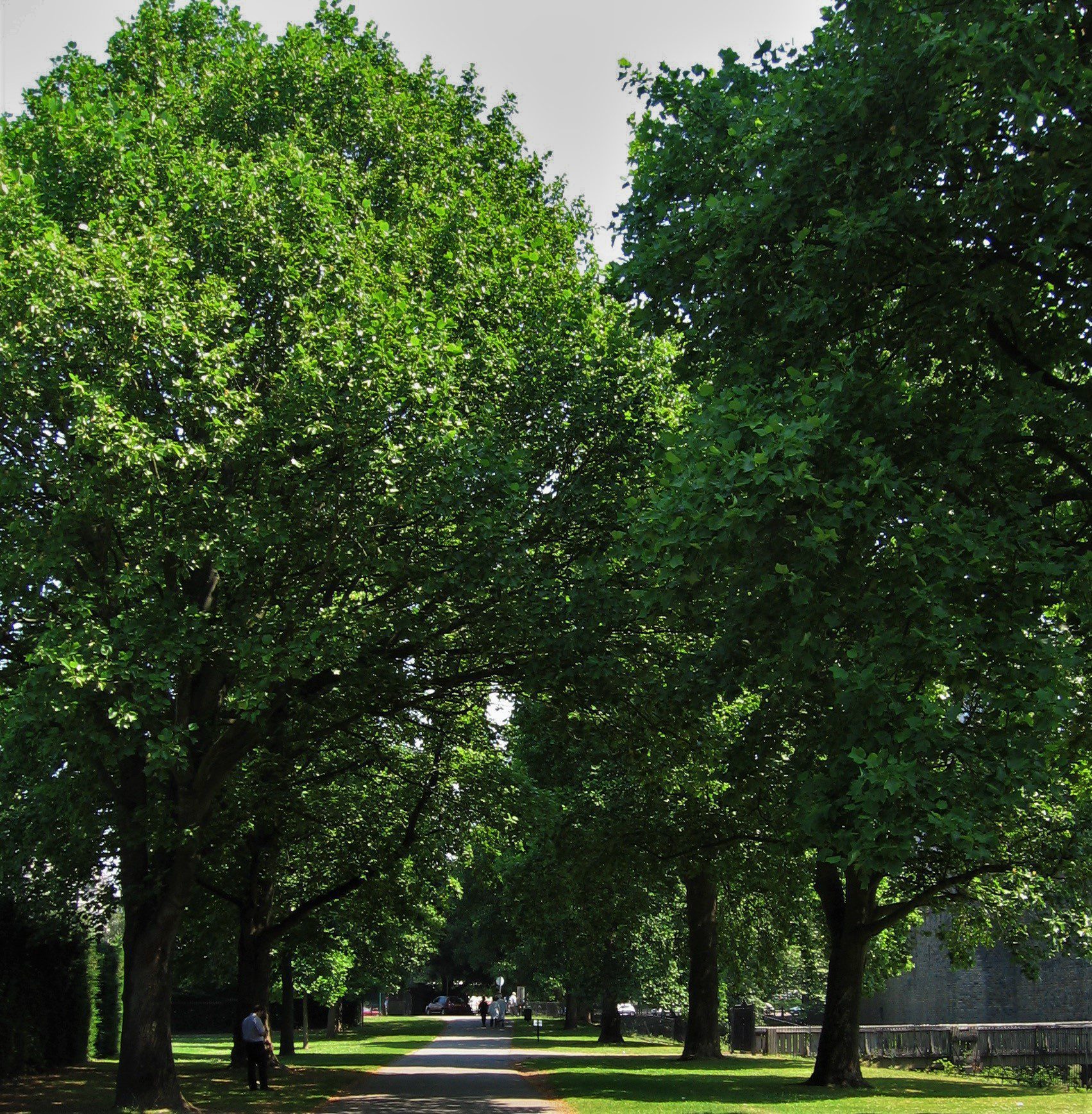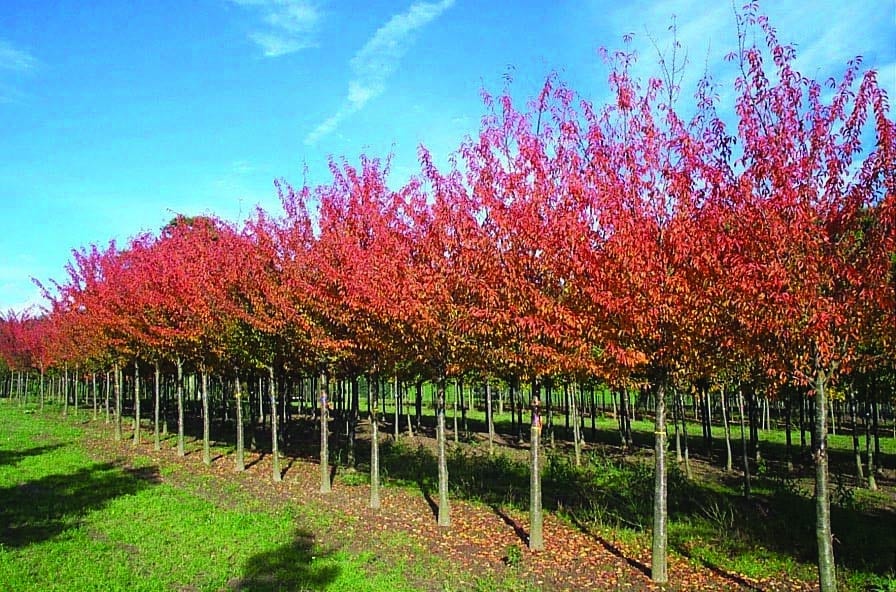The sight of blossom-filled trees lining avenues, or the first magnolia buds bursting into flower in the garden are some of the most joyful signs that spring has arrived. By selecting and planting trees that offer stunning spring colour and interest, the natural environment is given an early boost out of its winter dormancy, lifting the spirits of all who see them.
At Hillier Trees, we grow an extensive range of spring flowering trees to accommodate every planting scenario. Here are six of our favourite varieties; useful and impressive specimens with varying flowering times form early through to late spring.
Amelanchier arborea ‘Robin Hill’
Amelanchier arborea ‘Robin Hill’ is a fantastic tree for brightening up grey urban spaces. It is one of the first trees to awake in spring, offering an abundance of small pink buds that quickly burst open to a flurry of white, star-shape flowers that cover the tree from top to bottom.
An American form of the Amelanchier lamarckii, Amelanchier arborea ‘Robin Hill’ has a compact, erect canopy rather than the wider spreading lamarckii. It is particularly hardy, grows to around 8m with a narrow erect crown and is not affected by brown tail moth.
Discover the beauty of our spring colour trees, offering stunning displays that extend throughout the seasons. From its spectacular spring blossoms to its bronzed sandstone foliage transitioning into a lush emerald green in summer, this tree captivates year round. Come autumn, its leaves transform into a dazzling array of yellows, golds, fiery oranges, and red tinges. Named for its small liquorice coloured fruit, this tree delights both humans and birds alike in early summer.
Fact File
Common Name: June Berry / Service Berry.
Environment: A hardy tree which tolerates poor soil environments.
Spring Interest: A profusion of creamy white, star-shaped flowers from mid-March.
Size: 8m high x 2.5m wide after 25 years
Magnolia ‘Galaxy’
This beautiful Magnolia is a hybrid between Magnolia liliiflora ‘Nigra’ and the English cultivar, Magnolia sprengeri ‘Diva’.
Magnolia ‘Galaxy’ has a strong central leader, with fluid branches that flow upwards, creating a rounded upright canopy when mature. Its deep red buds are a real feature within the open canopy. These develop in early spring, so will not be damaged by winter frosts. In late spring, the buds burst open as a profusion of pleasantly fragrant flowers in striking shades of candyfloss pink and water-brushed purple, lasting long into the early summer.
This is an elegant tree, well suited for prominent housing estates and new developments and is also a particular favourite within designer gardens. It should be planted in a sheltered position to ensure the emerging flowers are not damaged by winds and untimely frosts.
Fact File
Common Name: Galaxy Magnolia.
Environment: Adapts to most soil structures including clay, loam and sand. Ideal for housing estates, public open spaces and prominent high street squares.
Spring Interest: Deep red buds in early spring, opening to an abundance of large flowers with pronounced shades of candyfloss pink and hues of purple in late spring.
Size: 7m high x 3m wide after 25 years
Prunus ‘Tai-Haku’
In old Japanese art, or movies with majestic blossom trees, it is usually the ‘Tai-Haku’ we are seeing. It was believed to have completely died out until, by a chance encounter, a specimen was found to be growing in a hobbyist’s garden within Sussex, England in the early 1920s. All Prunus ‘Tai-Haku’ trees now originate from this one single specimen.
These superb trees for spring colour, produce perfect white blossom flowers with a straight, unwrinkled edge. These elegant single flowers will grow from an early age, so they can be enjoyed straight away. The canopy of the tree is wide reaching, growing out further than it is in height, like an ancient crown gently hovering above the landscape.
This tree is ideal for planting in larger open spaces and green verges within new housing developments for the public to enjoy. Additionally, it is often specified within the grounds of stately homes, buisiness parks, and hotels to create the grandest of entrances.
Fact File
Common Name: Great White Cherry / The Lost Cherry
Environment: Suitable for most free-draining soil types — it does not tolerate waterlogging. A perfect specimen tree within a space that encourages its lateral growth.
Spring Interest: Brilliant white blossom, the most graceful of all cherries.
Size: 6m high x 6m wide after 25 years
Prunus litigiosa
Originally discovered as Prunus pilosiuscula in the central Chinese area of Hupeh, this rare tree was bought to the UK by the famous plant explorer Ernest Henry Wilson in the early 1900s. It is quite an uncommon variety, rarely specified, yet it offers many benefits. Its slender columnar form grows with a half-open canopy that remains narrow into maturity. Additionally, its delicate buds unfold with elegant flowers that hang gracefully in clusters with the opening foliage. Moreover, the flowers droop on long stalks, giving rise to its common name ‘Tassel Cherry’.
This is an ideal tree for narrow spaces and streets, or to provide a break in the landscape together with larger, rounded trees.
Fact File
Common Name: Tassel Cherry / Tassel Flower Tree
Environment: Suitable for most soil types, including chalk and clay, but requires free-draining soil as it does not tolerate waterlogging.
Spring Interest: Distinct flowers with a delicate cotton silk appearance to the petals that hang from the tree like tassels
Size: 8m high x 3m wide after 25 years
Malus hupehensis
This small tree offers the most prolific blossom of flowers of nearly all the Malus varieties. Its buds open to a cloud of pure white flowers with subtle pink petal edges. These flowers completely blanket the tree and look stunningly beautiful during a spring afternoon, producing a fresh scent that is attractive to bees.
As the flowers draw back in the summer, they make way for the developing crab apples. These small cherry-like fruits cover the branches in clusters of red which remain through the winter. For wildlife, they are very attractive and a vital source of winter nourishment.
This tree’s shape, flowering display and tolerance of soil conditions means it can be used for a range of applications, whether as part of larger housing developments or as a specimen tree in public open spaces.
Fact File
Common Name: Tea Crab Apple / Chinese Crab Apple
Environment: Adapts to all well-drained soils, including clay, loam and sand. Once established, it is drought tolerant and will succeed in a range of pH levels.
Spring Interest: One of the most profusely flowering Malus varieties. Its buds open to flowers of pure white, which completely blanket the tree.
Size: 6m high x 3m wide after 25 years
Crataegus media ‘Paul’s Scarlet’
Crataegus media ‘Paul’s Scarlet’ originated as a sport of the Crataegus ‘Rosea Flora Plena’, discovered in a Hereford garden. It was then grafted and cultivated by the famous Paul brothers.
This hawthorn is tough and resilient like its parents, thriving in nearly all locations. It is one of the latest of the spring-flowering trees, saving its display for the final days of May when double flowers of scarlet blush enclose the entire canopy. In autumn, it is wrapped in clusters of succulent black-red haws, which are loved by birds.
This is a great tree for bringing spring and autumn colour into difficult locations.
Fact File
Common Name: Hawthorn ‘Paul’s Scarlet’
Environment: A tough tree which establishes well in difficult locations, including soil structures that become dry and wet. Ideal for coastal areas and urban locations.
Spring Interest: Double flowers that burst with a mass of ruby scarlet blush in May.
Size: 6m high x 4m wide after 25 years
Contact our sales team to discuss trees for spring colour.



